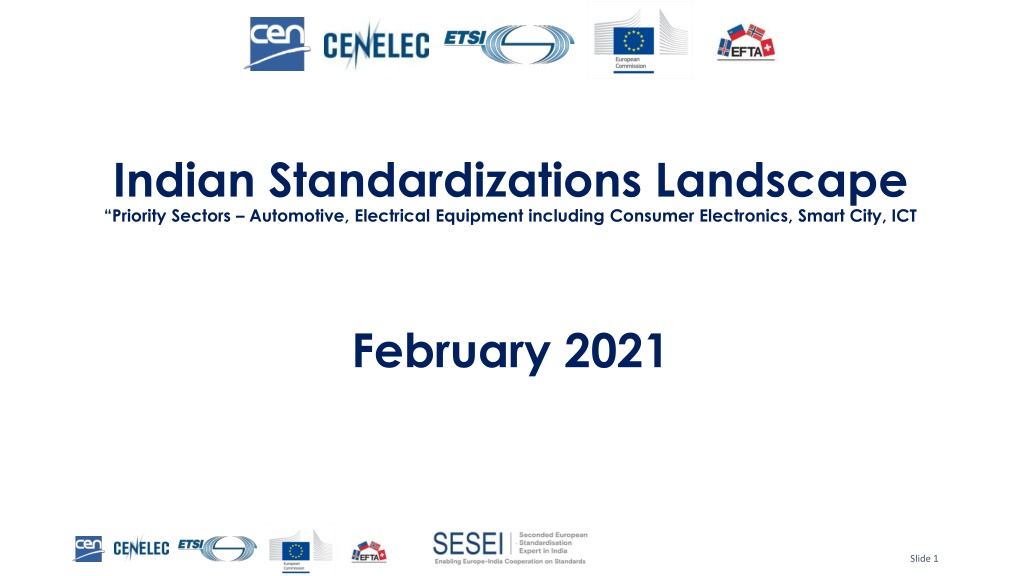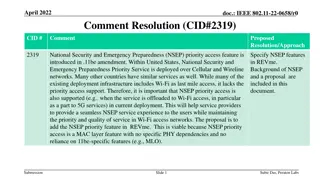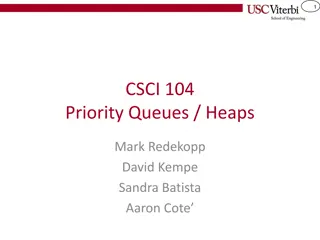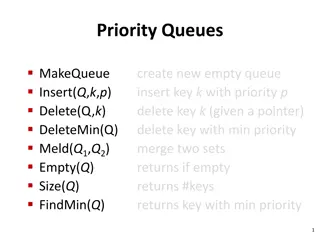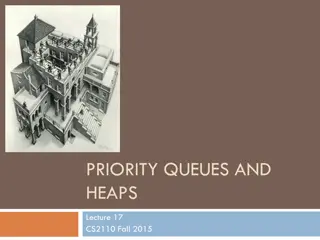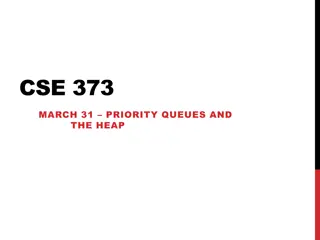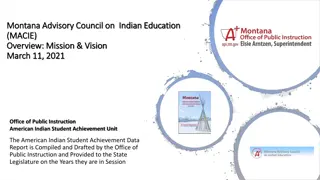Indian Standardizations Landscape: Priority Sectors and Bodies Overview
Explore the Indian standardizations landscape focusing on priority sectors like automotive, electrical equipment, consumer electronics, smart city, and ICT. Gain insights into key players, initiatives of the Indian government, and major standardization bodies such as BIS, TSDSI, and TEC. Learn about the objectives, activities, and areas of standardization in India.
Download Presentation

Please find below an Image/Link to download the presentation.
The content on the website is provided AS IS for your information and personal use only. It may not be sold, licensed, or shared on other websites without obtaining consent from the author. Download presentation by click this link. If you encounter any issues during the download, it is possible that the publisher has removed the file from their server.
E N D
Presentation Transcript
Indian Standardizations Landscape Priority Sectors Automotive, Electrical Equipment including Consumer Electronics, Smart City, ICT February 2021 Slide 1
Agenda Main Indian Standardisation Bodies BIS TSDSI TEC New Approach/ Key Initiatives of the Indian Gov. Project Priority Sectors and its Key Players Information & Communication Technology Automotive Smart City Electrical & Consumer Electronics Accreditation, Testing & Certification Foreign Standards Development Organizations in India Slide 2
Indian Standardisation Bodies BIS,TSDSI & TEC Slide 3
Main Standardization bodies in India Bureau of Indian standards (BIS) Telecommunication Standards Development Society for India (TSDSI) Telecommunication Engineering Centre (TEC) Indian Standardization Slide 4
Bureau of Indian Standards (BIS) 1(4) The Indian Standards Institution (ISI) founded in 1947 BIS took over work of ISI through enactment of BIS Act (1986) by the Indian Parliament BIS Act 2016 makes BIS National Standards Body of India Works as WTO-TBT Enquiry Point for India Objectives: o Harmonious, development of standardization & quality control o Certification schemes for products and systems o Growth and development of Indian industry, commerce and exports o Consumer protection Activities: o Standards Formulation o System Certification Scheme o Product Certification Scheme o Compulsory Registration Scheme o Foreign Manufacturers Certification Scheme o Hall Marking Scheme Laboratory Recognition Scheme Sale of Indian Standards Consumer Affairs Activities Promotional Activities Training Services, National & International level Information Services o o o o o o Slide 5
Areas of Standardization 2(4) 15 Sectors, 16 Division Councils, 350+ Sectional Committees, 20,000+ Standards Electronics & Information Technology Food and Agriculture Electrotechnical Chemical Civil Engineering Mechanical Engineering Metallurgical Engineering Petrochemical, Coal & Related Products Management & Systems Medical Equipment & Hospital Planning Production & General Engineering Textiles Transport Engineering Water Resources Services Sector 9 Slide 6
Product Certification Scheme of BIS 3(4) Product Certification Scheme: Offers 3rd Party assurance of quality, safety and reliability of products to the customer Allows the licensees to use the popular ISI mark on their product, which is synonymous with quality products. 90+ products are under mandatory certification BIS and Meity introduced Compulsory Registration Scheme (CRS) in 2012. 60 items covered under CRO Standard mark for CRS to be marked on products and packaging after BIS registration is granted. Product Certification Scheme for Foreign Manufacturers: Products certified include Packaged Drinking Water, Cement, Wood Products, Steel Products, Milk Products, Clinical Thermometers, Energy Meters, Electrical Appliances & Switchgear items etc. Scheme is applicable for grant of licence for all products except Electronics & IT Goods notified by MeitY. ECO mark scheme: BIS also grants licenses to environment friendly products So far, 17 product categories have been identified for coverage under this scheme Slide 7
International Cooperation 4(4) Founder member of ISO Represents India through Indian NC in the IEC Participating (P) member of 449 committees and Observer (O) member in 212 committees of ISO Participating member of 92 Technical Committees and observer member in 74 Technical Committees of IEC. Member of regional standards bodies like Pacific Area Standards Congress (PASC) and South Asian Regional Standards Organization (SARSO). 30 Memorandum of Understanding (MoU) & 07 Bilateral Agreements Slide 8
Telecommunication Standards Development Society, India (TSDSI) 1(3) Indian Telecom Industry, comprising operators and manufacturers, Academia and R&D organizations formed TSDSI on 7 January 2014, with an objective to contribute to next generation telecom standards and drive the eco-system of IP creation in India. It is an autonomous not for profit SDO for Telecom products and services in India Functions: Develop standards to support new requirements based on research & innovation Distil new items of research for standardization Take Indian requirements to global standards organizations; Creating and Safe-guarding related IPRs; to create standards based manufacturing expertise in the country; transparent, open-to-all-members process for making standards. Providing guidance and leadership to other developing countries Department of Telecommunications (DoT) & Ministry of Electronics and Information Technology (MEITY), Govt. of India are jointly supporting TSDSI as India s Telecom/ICT SDO. Slide 9
Technical activities 2(3) Study Group 1- Networks CPRI FrontHaul Channel Characteristics : 60GHz for 4G/5G backhaul Enablers for Private Networks NB-IoT Extension Broadcast offload Spectrum Studies Study Group 2- Services & Solutions Cloud Interoperability and Portability Public Protection and Disaster Recovery Dual SIM Services Support for Indian Languages Information Centric Networking UAV/Drone Communications and Services M2M/IoT Security and Privacy oneM2M Slide 10
Collaboration with International and other Forums 3(3) Cooperation agreements with 7 international SDOs: ARIB (Japan), ATIS (USA), CCSA (China), Continua Health Alliance, USA (IoT in Health), ETSI (Europe), TTA (Korea), TTC (Japan) MoU with GCF, 5G AI, TIA etc. Member of ITU TSDSI has introduced an indigenous developed 5G candidate standard at ITU WP-5D Meeting in Geneva held during December 10-13, 2019. Organizational Partner (OP) of 3GPP along with six other Regional Standardization bodies TSDSI has transposed 295 Specifications of 3GPP (select specifications from Rel 10 to Rel 13) for IMT Advanced (as per ITU-R (https://members.tsdsi.in/index.php/s/QCGsyjJocsm8RKj) Partner Type I of oneM2M TSDSI has Transposed oneM2M Specifications Rel 2 (comprising 17 specifications and 10 technical reports) into TSDSI Standards. (https://tsdsi.in/onem2m/) TSDSI has begun work on transposition of Release 3 specifications of oneM2M. Constituent SDO of Global Standards Collaboration (GSC) M.2012-3) into TSDSI Standards Slide 11
Telecommunication Engineering Centre (TEC) 1(3) TEC is the technical wing of DoT (Department of Telecommunications) and acts as a National Standards Body (NSB) for Telecom sector Functions: Specification of common standards for Telecom network equipment, services and interoperability. Prepare and Publish Generic Requirements (GRs), Interface Requirements (IRs). Issuing Interface Approvals, Certificate of Approvals, Service Approvals & Type Approvals. Formulation of Standards and Fundamental Technical Plans. Interact with multilateral agencies like APT, ETSI and ITU etc. for standardization. Develop expertise to imbibe the latest technologies and results of R&D. Provide technical support to DOT and technical advice to TRAI & TDSAT. Coordinate with C-DOT on the technological developments in the Telecom Sector for policy planning Designated National Enquiry point for WTO-TBT for telecom sector M2M WGs at TEC have released 13 Technical Reports (Release 1 and Release 2). TEC is implementing Mandatory Testing and Certification of Telecom Equipments (MTCTE) TEC has approved adopting TSDSI transposed oneM2M Rel. 2 specifications as National Standards Slide 12
Main divisions / Functional areas 2(3) Customer Premises Equipments Terminals Lab (CPE TL) Customer Premises Equipments & Terminals Lab (CPE & TL) Customer Premises Equipments Terminals Lab (CPE TL) Access Lab Access Lab Control Lab (CL) Control Lab (CL) Cyber Security (CS) Cyber Security (CS) Fixed Access (FA) Fixed Access (FA) Customer Premises Equipments Terminals Lab (CPE TL) Customer Premises Equipments Terminals Lab (CPE TL) Future Networks (FN) Future Networks (FN) Information Technology (IT) Information Technology (IT) Internet of Things (IoT) Internet of Things (IoT) Mobile Technologies (MT) Mobile Green Passport Green Passport Future Networks (FN) Information Technology (IT) Internet of Things (IoT) Mobile Technologies (MT) Technologies (MT) Next Generation Switching (NGS) Next Generation Switching (NGS) Regional Coordination (RC) Regional Coordination (RC) Radio (R) Radio (R) Smart Network Smart Network Standardization Standardization Next Generation Switching (NGS) Regional Coordination (RC) Telecom Certification (TC) Telecom Certification (TC) Telecom Security (TS) Telecom Security (TS) Telecom Lab (TL) Telecom Lab (TL) Transmission (T) Transmission (T) Telecom Certification (TC) Telecom Security (TS) Slide 13
International collaboration 3(3) TEC participates & follow programmes of standardization bodies such as below directly/indirectly: ITU 3GPP OneM2M ETSI (Member) GSMA IEEE National Working Groups (NWGs) corresponding to respective ITU-T Study Groups: NWG-5- Environment and climate change NWG-9: Television and sound transmission and integrated broadband cable networks. NWG-11: Signaling requirements, protocols and test specifications NWG-12: Performance, QoS and QoE NWG-13: Future networks including mobile and NGN NWG-15: Optical transport networks and access network infrastructures NWG-16: Multimedia coding, systems and applications NWG-17: Security Slide 14
New Approach/ Key Initiatives (Project Priority Sectors) Slide 15
Standards/IPR Slide 16
Bureau of Indian Standards (BIS) Bill 2016 BIS Bill 2016, replaced 1986 act to include goods, services and systems, with services Bill recognizes BIS as a National Standards body with international recognition to represent country. Bring more products under the mandatory standard regime. Gives BIS authority and power to withdraw sub-standard products Allows central government to notify certain goods, articles, etc. Bill also prescribes penalties for: Improper use of the standard mark by testing and marking centres. Manufacturing or selling goods and articles which do not carry a standard mark and have been mandated to do so, among others Slide 17
BIS (Conformity Assessment) Regulations, 2018 Framed under the provisions of the new Bureau of Indian Standards Act, 2016 BIS (Conformity Assessment) Regulations, 2018, lays down norms for Fees, Terms and conditions for grant, Operation, suspension, renewal, non-renewal and cancellation of licences for using or applying a Standard Mark on any article or goods. Conformity Assessment Schemes for Products & Grant of license to use standard mark, Initially evidence of conformity: For Scheme A: through Testing of Samples in Factory by Bureau For Scheme B : through Testing of Samples in Factory by Bureau and in Laboratory For Scheme C : through Testing of Samples in Factory by Bureau and in Laboratory (Certification of Lot) For Scheme D : through Test Report of Samples submitted by Applicant from Laboratory owned or as approved by Bureau and Testing of Samples in Factory by Bureau For Scheme E : through Self-Declaration and Test Report of Samples submitted by Applicant from Laboratory For more information, please click here BIS CA Amendment 2020 Slide 18
BIS Rules, 2018 Ministry of Consumer Affairs, Food & Public Distribution (Department of Consumer Affairs) has notified BIS Rules, 2018 on 25th June 2018 Central Government hereby makes these rules with new changes such as below:- Concurrent Running of Indian Standards after amendment/update Adoption of other Standards from SDOs beyond ISO/IEC as Indian Standards Recognition or accreditation of Institutions engaged in standardization Standard Mark Appointment of agents etc. For more details, please click here for BIS Riles, 2018 & For BIS (Amendment) Rules, 2020, please click here Slide 19
Indian National Strategy for Standardization (INSS) Department of Commerce, Government of India released Indian National Strategy for Standardization (INSS) in June 2018 INSS addresses four broad pillars of Quality infrastructure, viz Standards development, Conformity assessment & accreditation, Technical Regulations & SPS measures, and awareness & education Objectives of INSS: Positioning standards as a key driver of all economic activities relating to goods and services Developing a comprehensive ecosystem in India for standards development taking into account the diversity of interests and expertise available Using standards for providing a level playing field to domestic industries and enhancing the competitiveness of Indian goods and services in domestic and international markets Adopting best practices in standardization, conformity assessment and accreditation and technical regulations and creating an integrated infrastructure, roadmaps and institutions for their effective management Playing an active role and taking leadership positions in apex international forums in the related areas Creating response mechanisms to global developments on standards, technical regulations and conformity assessment practices that impact market access of Indian goods and services. Read more/Download>> Slide 20
Standards National Action Plan (SNAP) Bureau of Indian Standards (BIS), being National Standards Body (NSB), has developed Standards National Action Plan (SNAP) as part of Indian National Strategy for Standardization (INSS) released by Ministry of Commerce & Industry in 2018. Objectives: 1. Identification of standardization needs and enhancing stakeholder involvement; 2. Making standardization processes efficient and fast; 3. Ensuring harmonious standardization activities in the country; 4. Increased participation and involvement in international standardization activities; 5. Increasing awareness and implementation of standards. The action plan has prioritized standardization issues ranging from engineering to services, IoT to AI and smart cities to e-mobilities. Smartness , Sustainability and Services would be the key to future standardization. For more information, please click here>> Slide 21
Consumer Protection Act, 2019 Consumer Protection Act, 2019, has come into force in July 2020 & this Act replaces the Consumer Protection Act, 1986 Salient features: New definition of consumer including online purchasing Central Consumer Protection Authority (CCPA) Consumer Protection Councils Mediation Rules on e-commerce and direct selling Penalty for adulteration of products/spurious good Simplified Dispute Resolution Process Product Liability Read more/Download>> Slide 22
National Intellectual Property Rights (IPR) Policy DIPP (Department of Industrial Policy & Promotion) is responsible to coordinate, guide & oversee implementation of IPRs in India. National IPR Policy 2016 was adopted on 12th May 2016 as a vision document to guide future development of IPRs in the country Objectives: To create public awareness about the benefits of Intellectual property among all sections of society. To stimulate the creation and growth of intellectual property by undertaking relevant measures. To have strong and effective laws regarding IP rights, consistent with international obligations. To modernize and strengthen IP administration. To catalyze commercialization of IP rights. To strengthen the enforcement and adjudicatory mechanisms for combating IP violations and to promote awareness and respect for IP rights. Capacity development by strengthening and expanding human resources, institutions for training, research and skill building in IP. In May 2016, DIPP also floated a discussion paper on standard essential patents and their availability on fair, reasonable and non-discriminatory terms. For more details, please click here Slide 23
BIS Mobile app BIS Care & Indian Standards Portal BIS Mobile app BIS Care In July 2020, Ministry of Consumer Affairs, Food and Public Distribution has launched BIS Mobile App BIS-Care and three portals:- Standardization, Conformity Assessment and Training Portals of e-BIS for consumers. Consumers can check the authenticity of the ISI-marked and hallmarked products and can also lodge complaints by using this medium. Indian Standards Portal Ministry of Commerce and Industry has launched India Standards Portal , an online resource to provide updated information on India's Quality infrastructure comprising prevailing systems for standardization, technical regulations, conformity assessment and accreditation practices, and the related bodies in India. Slide 24
ICT Slide 25
National Digital Communication Policy, 2018 NDCP 2018 envisages three Missions: 1. Connect India: Creating Robust Digital Communications Infrastructure To promote Broadband for All as a tool for socio- economic development, ensuring service quality and environmental sustainability. 2. Propel India: Enabling Next Generation Technologies and Investments, Innovation and IPR generation To harness the power of emerging digital technologies, including 5G, AI, IoT, Cloud and Big Data to enable provision of future ready products and services; and to catalyse the fourth industrial revolution (Industry 4.0) by promoting Investments, Innovation and IPR. 3. Secure India: Ensuring Sovereignty, Safety and Security of Digital Communications To secure the interests of citizens and safeguard the digital sovereignty of India with a focus on ensuring individual autonomy and choice, data ownership, privacy and security; while recognizing data as a crucial economic resource. Read more/Download>> Broadband for All Digital Sovereignt y 4 Million Jobs Services through Objectives Enhancing contributio n to Global Value Chains 8% of India s GDP IND to be in Top 50 Nations in IDI of ITU Slide 26
Data Centre Policy 2020 (Draft) Ministry of Electronics & IT (MEITY) has drafted a Data Centre policy to position India as a Global Data Centre hub. Mission: Ensure sustainable and trusted Data Centre capacity in the country to meet the enormous demand generated in one of the fastest growing economies. Strengthen India s position as one of the most favourable countries for Data Centres by incentivizing and facilitating establishment of state-of-the-art Data Centres. Encourage domestic and foreign investments in the sector Promote R&D for manufacturing and dev. of Data Centre related products and services for domestic & global markets. Promote domestic manufacturing, including non-IT as well as IT components, to increase domestic value addition and reduce dependence on imported equipment for Data Centres. Key Objectives: Drive necessary regulatory, structural and procedural interventions for enabling ease of doing business, towards attracting investments and accelerating the existing pace of Data Centre growth in the country. Promote sector competitiveness through various fiscal and non-fiscal incentives. Promote domestic start-ups, MSMEs and other Indian IT companies and provide impetus to indigenous manufacturing of IT and non-IT equipment. Meet the data security needs by promoting investments in trusted (safe and secure) Data Centres in India. Facilitate standardization in the development of Data Centres. Promote capacity building in the sector through association with various skilling /human resource dev. programs. For more details, please click here Slide 27
Personal Data Protection Bill, 2019 Personal Data Protection Bill, 2019 ("PDPB") was introduced by Ministry of Electronics & IT (MEITY), on December 11, 2019. PDPB aims to: provide for protection of the privacy of individuals relating to their personal data, specify the flow and usage of personal data, establish a Data Protection Authority of India create a relationship of trust between persons and entities processing the personal data, protect the fundamental rights of individuals whose personal data is processed, to create a framework for organizational and technical measures in processing of data, laying down norms for social media intermediary, cross-border transfer, accountability of entities processing personal data, remedies for unauthorized and harmful processing, and Bill is being analyzed by a Joint Parliamentary Committee (JPC) in consultation with experts and stakeholders. For more details, please click here Download Data Protection Committee- Report>> Slide 28
TEC Policy for adoption domestic/international standards A committee was constituted in TEC to formulate the policy for ratification/adoption of TSDSI/international standards. Following points have been considered while formulating this policy: National adoption of TSDSI transposed international standards or standards developed by any other SDO clearly indicates to the Standards-using community that the respective Standard is reviewed/endorsed by TEC It indicates that TEC has determined that the Standard adopted is used internationally by Indian trading partners and is not enshrining obsolete or little used technologies or practices. It enables the selection of options for local usage that are provided for in some international Standards. It expands the portfolio of Indian Standards coverage and thus encourages those seeking standardization information to seek it from within Indian Standards. It provides Indian standards using community with the adopted international standard at a price that may be significantly lower than the international standard and thus encourage more use of standards for the benefit of trade and the Indian community. TSDSI or any other SDO in India may under its prescribed bylaws may be required to get the standard transposed/ developed by it ratified / adopted from DOT. It is the policy of TEC to align Indian national Telecom Standards with International Standards as far as feasible. Click here for the Policy and Click here for Standardization Guide Slide 29
National Telecom M2M Roadmap Department of Telecom (DoT) released its National Telecom M2M Roadmap in May 2015 for growth of M2M Focus Areas: Efforts towards assimilation of various M2M standards Outline of policy and regulatory approaches for M2M Plans to boost M2M manufacturing as a part of Make In India initiative Building M2M communication infrastructure Road ahead for M2M initiatives and plans Approach towards M2M adoption in different sectors of economy. M2M Working Groups formed at TEC in following verticals for finalization of standards related work Power, Automotive, Health, Surveillance, M2M Gateway and Architecture, Home Appliances, Smart Cities In June 2016, DoT released draft guidelines for M2M Service Providers Registration In February 2018, DoT issued 13-digit numbers for the trial of M2M communications In May 2018, DoT released instructions in relation to SIM cards used for M2M comm. Services Telecom Regulator TRAI has issued recommendation on Spectrum, Roaming and QoS related requirements in M2M Communications . In, September 2020, TEC has approved oneM2M specifications transposed by TSDSI as National Standards. Download National Telecom M2M Roadmap>> Slide 30
Internet of Things (IoT) policy 2016 Department of Electronics and Information Technology (DeitY) drafted India s first IoT Policy in October 2016 Key Objectives: To create an IoT industry of USD 15 billion by 2020 To undertake capacity development (Human & Technology) for IoT specific skill sets for domestic and international markets To undertake Research & development for all the assisting technologies To develop IoT products specific to Indian needs in all possible domains such as agriculture, health, water quality, natural disasters, transportation, security, automobile, supply chain management, smart cities, automated metering and monitoring of utilities, waste management, Oil & Gas) etc. To facilitate global and national participation of industry and research bodies with relevant global Service Setting Organizations (SSOs) for promoting standards around IoT technologies developed in the country IoT Policy will support the initiatives taken by GoI to develop connected and smart IoT based system for our country s Economy, Society, Environment and global needs. Download Internet of Things (IoT) policy >> Slide 31
5G India 2020 High Level Forum In September 2017, a High-Level Forum was constituted, with an aim to; a. Vision Mission and Goals for the 5G India 2020, b. Evaluate, approve roadmaps & action plans for 5G India 2020. A picture containing text, book, tennis, building Description generated with very high confidence Participation in International Stds. Spectrum Application Layer Stds. Key Recommendations Regulatory Major Trials & Technology Development Education & Awareness Use Case Labs Slide 32
TRAI white Paper on Enabling 5G in India TRAI has released its white paper on Enabling 5G in India In order to create an enabling environment for the timely rollout of 5G in India. TRAI s white-paper covers: Specifications of the 5G technology, Potential use cases and architecture of 5G networks. Areas that will require investment for 5G deployment and Spectrum requirements for 5G networks. Regulatory challenges that need to be addressed for the deployment of 5G. The purpose of the white paper is to identify the probable challenges, including regulatory ones, in the deployment of 5G Networks in India and to initiate a discussion with all stakeholders for finding implementable solutions. Download TRAI WP on Enabling 5G in India>> Slide 33
National blockchain policy draft paper titled as Blockchain The India Strategy Government think tank NITI Aayog has released Draft Discussion Paper on Blockchain: The India Strategy (Part 1) in January 2020 It aims to demystify the concepts surrounding this technology, identify areas where it can be utilized for more transparent and open models of cooperation between entities and recommend the next steps towards achieving this goal. discussion paper has made a case for using blockchain technology to resolve business and governance process inefficiencies. Paper suggested regulatory infrastructure to be put in place for evolving a vibrant blockchain ecosystem and creation of a National infrastructure for deploying blockchain solutions with in-built fabric, identity platform and incentive platform. Paper also suggested government to adopt blockchain solutions for procurement process. Blockchains can broadly be defined as a new type of network infrastructure that create 'trust' in networks by introducing distributed verifiability, auditability, and consensus. Download Blockchain Strategy here>> Slide 34
Discussion Paper on the Framework of an Indian AI stack: DoT Department of Telecom under Ministry of Communication released discussion paper on the framework of an Indian Artificial Intelligence (AI) Stack with the intention of mitigating impediments in AI deployment and essentially make AI uniform for application across sectors. Paper highlights five major horizontal pillars: Infrastructure Layer, Storage Layer, Compute Layer, Application Layer, Data / Information Layer and one main vertical pillar - Security & Governance Layer key benefits of this proposed Indian AI stack are: Easy interface (vertical or horizontal) with end user application; Maintains, a secure storage environment that simplifies the archiving and extraction of data based on the data classification; Ensures, protection of data, data federation, data minimisation; open algorithm framework; defined data structures; interfaces and protocols, monitoring, audit and logging; trustworthiness, etc; Ensures, legitimacy of backend services, transaction movement etc; Provides services through secured gateway services to the customer; Protection of Digital Rights and maintaining ethical standards; Consent for use of data from customers will be taken through properly framed consent framework; Enables provision of safe, secure and trusted AI services to the customer; Enables open API integration and facilitates the environment for load balancing, security, failover capabilities, multi- tenant architecture for concurrent users; and Enforces the usage of Government Public Key Infrastructure (PKI) services. Download Discussion Paper here>> Slide 35
Discussion Paper on AI: NITI Aayog In June 2018, Government think- tank, NITI Ayog has unveiled its discussion paper on national strategy on Artificial Intelligence (AI) which aims to guide R&D in new and emerging technologies. Agriculture Healthcare Education NITI Aayog s Discussion paper on AI identified 5 sectors Government has approved the expenditure of Rs 7,000 crore till 2024-25 for NITI Aayog s artificial intelligence (AI) programme. Niti Aayog will develop a national data and analytics platform to make all government accessible to stakeholders in a user-friendly manner. Transportation Infrastructure data Slide 36
Digital India Launched by Government of India on 1st July 2015 to transform India digitally empowered society and knowledge economy. Three core components Development of secure and stable Digital Infrastructure Delivering government services digitally Universal Digital Literacy Nine Pillars Broadband Highways Universal Access to Phones Public Internet Access Programme e-Governance - Reforming government through Technology e-Kranti - Electronic delivery of services Information for All Electronics Manufacturing - Target NET ZERO Imports IT for Jobs Early Harvest Programmes For more information, please click here Slide 37
National E-Commerce Policy 2019 (Draft) In Feb 2019, India has released draft national e-commerce policy proposing setting up a legal and technological framework for restrictions on cross-border data flow It also laid out conditions for businesses regarding collection or processing of sensitive data locally and storing it abroad. Policy addresses following six broad issues of the e-commerce ecosystem I. data; II. infrastructure development; III. e-commerce marketplaces; IV. regulatory issues; V. stimulating domestic digital economy; and VI. export promotion through e-commerce. It identifies critical aspects of each issue and lays out strategies to achieve the Government s vision. For more information, please click here> Slide 38
Automotive Slide 39
National Auto Policy 2018 (Draft) In Feb. 2018, Department of Heavy Industry (DHI), Ministry of Heavy Industries & Public Enterprises (MoHI&PE) released the draft National Auto Policy (NAP). Vision: To provide a long-term, stable and consistent policy regime and to have a clear roadmap for the automotive industry, making India a globally competitive auto R&D and manufacturing hub and achieving the targeted objectives of green mobility Mission: To propel the automotive industry in India to be amongst the top 3 nations in the world in engineering, manufacturing and export of automotive vehicles and components To scale-up exports to 35-40% of the overall output and become one of the major automotive export hubs in the world To enable the automotive sector to become one of the largest employment creation engines To enable the automotive sector in India to become a global hub for research & development To drive the automotive sector in India to adopt safe, clean and sustainable technologies Download NAP 2018>> Slide 40
Automotive Mission Plan 2016-26 Automotive Mission Plan 2016-26 is a collective vision of Department of Heavy Industries (DHI) and Indian Automotive Industry. Objectives: To grow 3.5 to 4 times of the current value of USD 74 million by 2026. PVs likely to increase between 9.4 million-13.4 million, CVs between 2 million to 3.4 million units, two wheelers to grow to 50.6 - 55.5 million tractors to 1.5-1.7 million. To make the Indian automotive industry to be the engine of the Make in India programme. Focus to promote safe, efficient, and comfortable auto vehicles to every person in the country. To increase net exports of the Indian automotive several fold & Contribute over 12% country s GDP To create nearly 65 million by the next decade Download AMP 2016-26>> Slide 41
National Electric Mobility Mission Plan 2020 Introduced jointly by government, automotive industry and academia/research institutes. Promotion & development of indigenous manufacturing capabilities, required infrastructure, consumer awareness and technology. 6 million electric & hybrid vehicles per year on the road by 2020. Faster Adoption and Manufacturing of Hybrid and Electric vehicles (FAME) India Initially, FAME-I as part of NEMMP was launched by DHI in 2015 for 2 years but was extended from time to time till March 31, 2019 FAME-II with an outlay 10,000 crore(~ 1200 million) , has come into effect on April 1, 2019 for three years Under FAME II, INR 1000 Crore (~ 120 million) has been earmarked for establishment of charging infrastructure, which will be established as per Charging Infrastructure for Electrical Vehicles- Guidelines and Standards released by Ministry of Power. Technology Platform for Electric Mobility (TPEM) Joint initiative of DHI and DST To create a collaborative platform for developers, suppliers, automakers to work together Download NEMMP 2020>> Slide 42
Draft National Rail Plan In an endeavor to address the inadequacies of capacity constraints and improve its share in total freight ecosystem of the country, Indian Railways has come up with draft National Rail Plan. Objectives: To create capacity ahead of demand by 2030 till 2050 Traffic growth forecast growth of traffic in both freight and passenger yoy up to 2030 and on a decadal basis up to 2050. Formulate strategies based on both operational capacities and commercial policy initiatives to increase modal share of Railways from 27% currently to 45% in freight by 2030. Reduce transit time of freight substantially by increasing average speed of freight trains from present 22Kmph to 50Kmph. Reduce overall cost of Rail transportation by nearly 30% and pass on the benefits to the customers. Identify infrastructural bottlenecks that would arise in future with growth in demand. Net Zero Carbon emission by 2030, as part of a national commitment to reduce Carbon emission and to sustain it. This draft plan as prepared by AECOM is being circulated among various ministries for their views/comments and expected to be finalized very soon. Read more/Download>> Slide 43
Electrical Equipment including Consumer Electronics Slide 44
Indian Electrical Equipment Mission Plan 2012-22 Developed by Department of Heavy Industries (DHI) in consultation with all stakeholders and with support from Indian Electrical and Electronics Manufacturers Association (IEEMA) Vision 2022: To make India the country of choice for the production of electrical equipment and reach an output of US$100 billion by balancing exports and imports Core Themes of Improvement in the Mission Plan Industry competitiveness Skills Development Technology Up- gradation Conversion of latent demand Exports For More Details Click Here Slide 45
Smart Grid Vision and Road map for India ISGF in consultation with ISGTF had prepared a comprehensive smart grid vision and roadmap for India In 2013 Smart Grid Vision and Road map for India was approved by Ministry of Power that offers a series of time-framed, specific, target driven measures, across these different areas, with which to enable the development of an Indian Smart grid model. Smart Grid Vision for India Transform Indian power sector into a secure, adaptive, sustainable and digitally enabled ecosystem that provides reliable and quality energy for all with active participation of stakeholders Road map covers the 12th , 13th, and 14th five year plan periods from 2012 to 2027 Read more/download>> Slide 46
National Smart Grid Mission (NSGM) National Smart Grid Mission Institutional Framework MoP launched NSGM in 2015 with aims to accelerate Smart Grid deployment in India Ministry of Power NSGM Governing Council; Chair: Minister of Power Major activities envisaged under NSGM are: Development of smart grid, Development of micro grids, Consumer engagements and training & capacity building etc. Technical Committee Chair: CEA Chairperson EESL & other Consultants NSGM Empowered Committee Chair: Secretary (MoP) NSGM Project Management Unit (NPMU) at POWERGRID Development/deployment of SGs are presently being carried out through ISGTF/ISGF under the aegis of MoP Director NPMU ISGF Smart Grid Knowledge Centre Recommend atory /advisory in nature Data Research & Development, Technology & Standards U nit Projects, Training & Capacity Building Unit Policy, Planning and Monitoring Unit Management and Cyber Security Unit Following projects have been sanctioned under NSGM: CED, Chandigarh (Sub Division 5) CED, Chandigarh (Complete City excluding Sub Div 5) KSEB, Thiruvananthapuram (Kochi) JBVNL, Jharkhand (Ranchi) OPTCL, Odisha (Rourkela) State Level Mission Chair State Secretary (Power) State Smart Grid Mission Units (SSGMU) Consumers, Civil society organizations and local government (including RWAs, village panchayats, etc.) Read more about NSGM>> Distribution Utilities Slide 47
Smart Meter National Programme (SMNP) Smart Meter National Programme is being implemented by Energy Efficiency Services Limited (EESL) under Ministry of Power (MoP) to eventually replace 25 crore (250 million) conventional meters with smart meters across India. SMNP is being implemented under BOOT model on cost plus approach, which means all Capex/Opex is done by EESL and the states/ utilities are not required to invest upfront EESL has signed MoUs/Agreements for smart meters with states of Andhra Pradesh, Uttar Pradesh, Haryana, Bihar, NDMC-Delhi, Rajasthan, Telangana and for prepaid meters with the states of Uttar Pradesh and Tripura. EESL has completed procurement process of 1.5 crore (15 million) smart meters. As on date, EESL has installed over 13.2 lakh smart meters in Uttar Pradesh, New Delhi, Haryana and Bihar under SMNP Read more about SMNP>> Slide 48
Smart City Slide 49
Smart City Mission, Government of India India launched 100 smart cities mission On 25th June 2015. Create core infrastructure Provide a decent quality of life Build clean and sustainable environment and application Government has announced names of 100 smart cities with a total proposed investment of INR 2,05,018 Crore ( 24 Billion). Smart Cities Mission Dashboard: Total Winning Proposals were 100 Total Urban Population Impacted is 99,630,069 Total Cost of Projects ( Cr.) (Including Other Cost - O&M, Contingency, etc.) is 2,05,018 Cr. ( 24 billion) Total Area Based Development Cost ( Cr.) is 164,204 [ 19.3 Billion] Total Pan City Solution Cost ( Cr.) is 38,914 [ 4.6 Billion] Telecom Regulatory (TRAI) has released White paper on Smart Cities in India: Framework for ICT infrastructure that tries to identify the framework for ICT Infrastructure for the success of Smart Cities Mission in India. For more information on Smart Cities Guidelines and other related information please click here and here and here Slide 50
